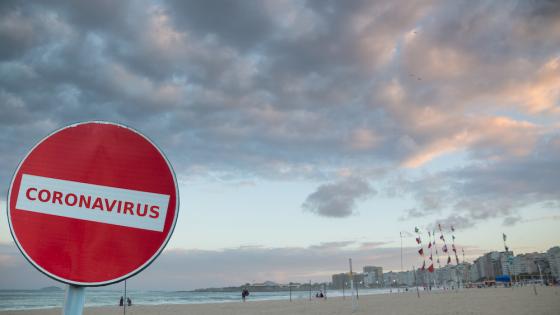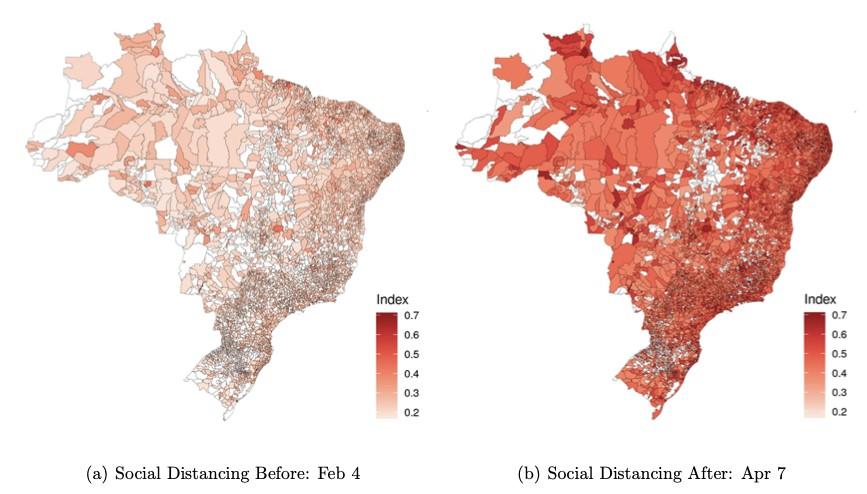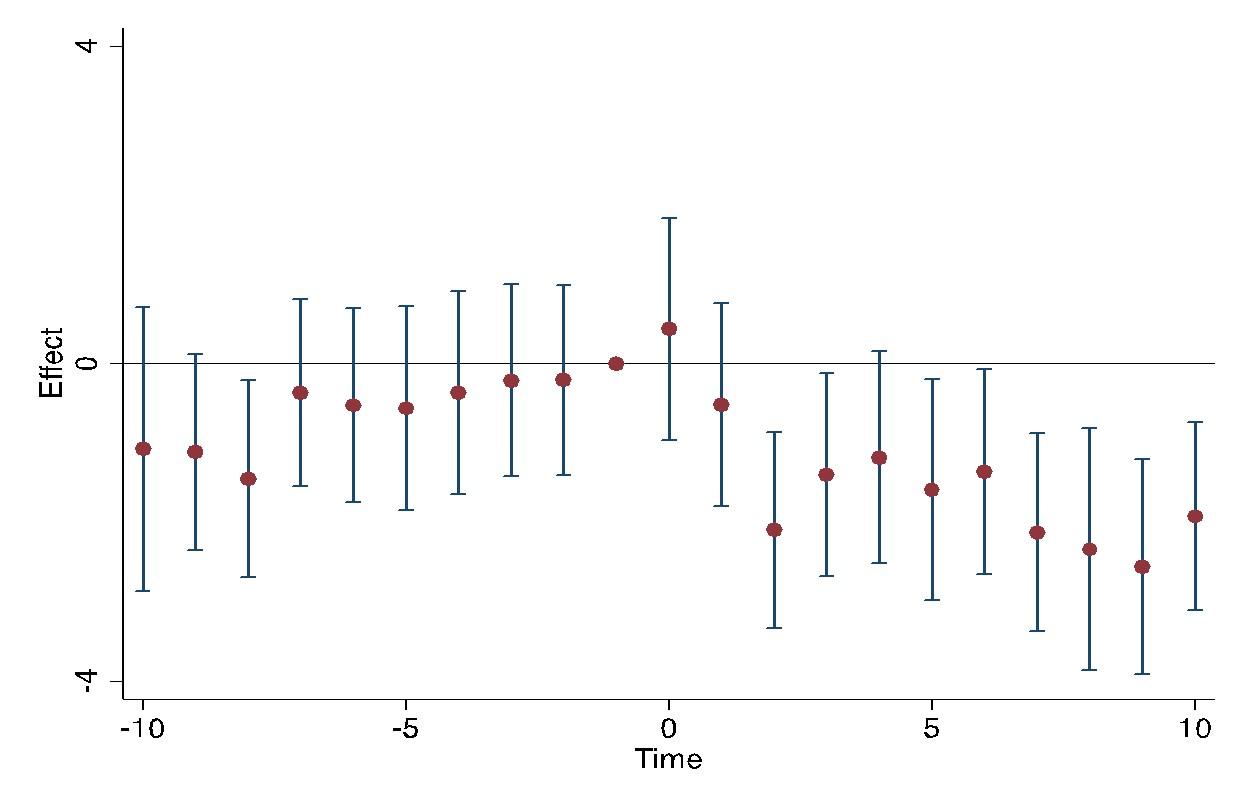During times of crisis such as the current COVID-19 pandemic, leaders can have a disproportionate influence on people’s behaviour. Asymmetric information between governments and citizens matters even in normal times but can become considerably more consequential in a public-health emergency. Not only may citizens ignore best prevention practices but, more importantly, they are likely to be unaware of the extent of the spread of the disease in their areas, ignore negative externalities in the transmission of the virus, and be uninformed about dynamic developments in the crisis.
That leaders can affect people’s beliefs and behaviours through different channels is well understood (e.g. Acemoglu and Jackson 2015, Dewan and Myatt 2008, Hermalin 2017). Their power – both positive and the negative – is becoming apparent with the COVID-19 crisis. A political leader’s recommendations on preventive behaviour are taken seriously by followers, regardless of how scientifically sound the statements are. For instance, after President Trump suggested that disinfectant could be injected as a remedy against coronavirus (Yglesias 2020), there was a rise in interest in (and eventually purchase of) disinfectant (Aleem 2020).
While most countries have, at some point, implemented non-pharmaceutical interventions such as quarantine or school closures, the public speeches and narratives of leaders have been mixed. At one end, many heads of states have been emphatic in their fight against the virus, such as France’s Prime Minister Macron who declared “a war against COVID-19” (Belin et al. 2020). On the other extreme, many others – such as President Trump in the US (Liptak et al. 2020) and President Bolsonaro (The Economist 2020) in Brazil – have forcefully minimised the consequences of the virus and questioned the need to implement or extend non-pharmaceutical interventions.
The effect of denial: Evidence from Brazil
The Brazilian context provides a unique opportunity to explore the effects of a leader’s action and public speech on the citizens’ preventive and risk behaviours. Brazil is a polarised country in which the president has an almost equal level of strong approval and strong disapproval.
Contradicting his own health ministry and subnational social-distancing measures implemented in almost every state, Bolsonaro has encouraged people to go out and has made appearances in stores and markets and joined rallies on the streets, while dismissing the effects of the virus as “just a little dose of flu”. His behaviour was so controversial that it rapidly made it into dozens of international media outlets such as The Economist (The Economist 2020), The New York Times (Londoño et al. 2020), and e (Magalhaes and Forero 2020), among many others.
Now, the question is: Were Bolsonaro’s words powerful enough to have an effect on social distancing amidst growing contagion and non-pharmaceutical interventions implemented by subnational governments? In a new working paper (Ajzenman et al. 2020), we address this question by combining electoral data and granular geo-localised mobile phone data from 60 million anonymous devices in Brazil. We use a social distancing index at the municipality–day level based on the proportion of individuals that left their homes during a given day.
Figure 1 shows the map of Brazil and the social distancing index for all municipalities on Tuesday, 4 February 2020, and on Tuesday, 7 April 2020. Social distancing has risen nationally, but the changes were not homogeneous; social distancing rose in some municipalities more than in others. The mean of the social distancing index for the total period is 0.37 (0.25 in February, 0.41 in March, and 0.53 in the first two weeks of April). We argue below that these differences where far from random.
Figure 1 Social distance index in Brazil on 4 February and 7 April
Context and chronology of presidential speeches
Despite Bolsonaro’s opposition to drastic social-distancing measures and his denial of the health severity of the novel coronavirus, his messages on the issue were not always uniform and clear. However, there were two particular events, in which he directly referred to isolation and advised against it.
15 March: Demonstration
Despite official messages (including from the health ministry) to call them off, Bolsonaro – still monitored by doctors and suspected of being infected with SARS-CoV-2 after members of his cabinet tested positive following an official presidential visit to the US – showed up at one of the public demonstrations by his supporters in Brasilia. He took selfies and shared fist bumps with several supporters. During that day, he posted the largest number of tweets since becoming president (47 tweets), most of them with videos showing the rallies in different cities of the country.
His behaviour rapidly captured the attention of national and international media. On 16 March, Bolsonaro’s picture appeared on the front page of the three largest newspapers in Brazil (Folha de S.Paulo, O Globo, and Estadão) with headlines directly alluding to his behaviour in relation to virus prevention. Folha’s headline, for example, stated that “Bolsonaro ignores the virus and shows up in a march against the Congress and the [Supreme Federal Court] STF”. Estadão’s headline pointed in the same direction: “Infectologists criticise Bolsonaro for giving a bad example to the nation”, similar to O Globo’s headline: “Don’t do what I do, bad examples threaten the fight against coronavirus”. Other newspapers had similar headlines.
24 March: Official presidential pronouncement
From the beginning of the outbreak until 14 April, there were five official presidential pronouncements. Such pronouncements are particularly relevant because every TV or radio station in the country broadcasts them. In the first two communications (6 and 12 March), the president gave short speeches and the messages were not specific to social distancing. He praised the work of the federal government and encouraged people to follow prevention measures recommended by specialists.
The tone was completely reversed in his speech of 24 March. Doubling the length of his discourse, Bolsonaro directly referred to social-distancing policies implemented by subnational governments. He first emphasised that the risk group was mainly the elderly and therefore argued for reopening schools. He emphasised that jobs had to be maintained and criticised the media for spreading the news from Italy (“a country with a large elderly population and completely different weather”).
He referred to his personal situation and said that, due to his athletic historical condition, he would not need to worry even if he got infected: “I would feel nothing or, in the worst case, it would be like a little flu.” He finally mentioned the effectiveness of antimalarial medications based on hydroxychloroquine in fighting COVID-19.
As in the case of the public protests on 15 March (and unlike any of the previous or later official communications), his speech made it again to the front pages of the main national newspapers the following day. Folha’s headline, for example, stated that “Bolsonaro criticises school closures and attacks the press”. Estadão’s headline stated that “Bolsonaro criticises the quarantine and wants stores and schools to open”, similar to O Globo’s headline: “Bolsonaro ignores the world’s trends and criticises isolation and school closures”.
The effect of presidential pronouncements on social distancing
We examine whether the presidential messages had a significant effect on social distancing among the pro-Bolsonaro municipalities. We identify pro-Bolsonaro municipalities and use standard econometrics (we interact the two key dates above with the average support for Bolsonaro in each Brazilian municipality, according to the 2018’s presidential election, and estimate a two-way fixed effects model – day and municipality fixed effects –with leads and lags).
As a baseline, we classify a municipality as pro-Bolsonaro if he obtained more than 50% of the votes in the first round of the election. Results are shown in Figure 2. All leads, except one (t = -9), are indistinguishable from zero. On the contrary, every single lag , starting on day 1, is negative, and all of them starting from day 2 are significantly different from zero. Therefore, Bolsonaro’s words and actions have had a stronger effect on relaxing social distancing in the municipalities where he had stronger support in the 2018 election compared to those where his support was weaker.
Figure 2 Average effect on social distancing: Municipalities in which Bolsonaro had at least 50% of the votes in the first round of the 2018 election
A potential problem with our baseline definition of support for Bolsonaro is that – in the first round of the 2018 election – there are some states in which he had less than 50% of the votes in every single municipality (and a few states in which he had more than 50% in every single one). This could turn problematic for identification because most of the social-distancing policies are implemented at the state level. To alleviate this potential problem, we run the same regression but now classifying a municipality as ‘pro-Bolsonaro’ if, in the first round, Bolsonaro obtained a proportion of votes higher than the state median. As Figure 3 shows, the effect, if any, becomes even larger.
Figure 3 Average effect on social distancing: Municipalities in which Bolsonaro had more than the state median percentage of votes in the first round of the 2018 election
A possible channel by which Bolsonaro’s words could be spread is, naturally, the media. As some studies have shown, local media (Ferraz and Finan 2008) and the internet (Bessone et al. 2019) play a significant role in spreading the news in Brazil. To analyse this, we classify municipalities as ‘high media access’ if it is in the top 25% of the distribution of households’ average internet penetration per municipality (according to the census) and the municipality has at least one local TV broadcaster. Our results (see Figure XIII of Ajzenman et al. 2020) show that the effects are stronger when media presence and internet penetration are stronger.
These results are consistent with findings of recent papers showing that compliance with social-distancing policies is affected by partisan divides (Barrios and Hochberg et al. 2020, Allcott et al. 2020, Kushner et al. 2020), that government recommendations are more or less obeyed depending on the political alignment with the citizens (Grossman et al. 2020), and that opinion leaders (such as TV hosts) play a crucial role in spreading prevention or anti-prevention messages (Bursztyn et al. 2020).
Whether it is by reducing information asymmetries or by setting a social norm, leaders’ examples and words can drive behavioural change among citizens, on beyond and above incentives and institutions. Political leaders’ actions and speeches are important tools for shaping people’s beliefs and affecting their behaviour, even during a pandemic.
References
Acemoglu, D, Jackson, M O (2015), “History, expectations, and leadership in the evolution of social norms”, The Review of Economic Studies 82: 423–56.
Ajzenman, N, T Cavalcanti and D Da Mata (2020), “More than words: Leaders’ speech and risky behavior during a pandemic”, SSRN 3582908.
Aleem, Z (2020), “Governors say Trump’s disinfectant comments prompted hundreds of poison center calls”, Vox.com, 26 April.
Allcott, H, L Boxell, J Conway, M Gentzkow, M Thaler and D Y Yang (2020), “Polarization and public health: Partisan differences in social distancing during COVID-19”, SSRN 3570274.
Barrios, J M, and Y V Hochberg (2020), “Risk perception through the lens of politics in the time of the COVID-19 pandemic”, University of Chicago, Becker Friedman Institute for Economics Working Paper.
Belin, C, A Bloch and J Nicolaï (2020), “France at war against the coronavirus: Politics under anesthesia?”, Brookings Institution, 31 March.
Bessone, P, F Campante, C Ferraz and P C Souza (2019), “Internet access, social media, and the behavior of politicians: Evidence from Brazil”, working paper.
Bursztyn, L, R Aakaash, C Roth and D Yanagizawa-Drott (2020), “Misinformation during a pandemic”, University of Chicago, working paper.
Dewan, T, and D P Myatt (2008), “The qualities of leadership: Direction, communication, and obfuscation”, American Political Science Review 102: 351–68.
Ferraz, C, and F Finan (2008), “Exposing corrupt politicians: The effects of Brazil’s publicly released audits on electoral outcomes”, The Quarterly Journal of Economics 123: 703–45.
Grossman, G, S Kim, J Rexer and H Thirumurthy (2020), “Political partisanship influences behavioral responses to governors’ recommendations for COVID-19 prevention in the US”, SSRN 3578695.
Hermalin, B E (2017), “At the helm, Kirk or Spock? Why even wholly rational actors may favor and respond to charismatic leaders”, working paper, UC Berkeley.
Liptak, K, K Collins and K Bennett (2020), “A restless Trump wants to end the country's isolation – and his own”, CNN.com, 26 March.
Londoño, E, M Andreoni and L Casado (2020), “Bolsonaro, isolated and defiant, dismisses coronavirus threat to Brazil”, The New York Times, 1 April.
Magalhaes, L, and J Forero (2020), “‘Go back to work’: Bolsonaro dismisses risks of deadly coronavirus in Brazil”, The Wall Street Journal, 2 April.
The Economist (2020), “BolsoNero: Brazil’s president fiddles as a pandemic looms”, 26 March.
Yglesias, M (2020), “President Trump’s dangerous suggestion that the coronavirus be treated with bleach injections, explained”, Vox.com, 24 April.








